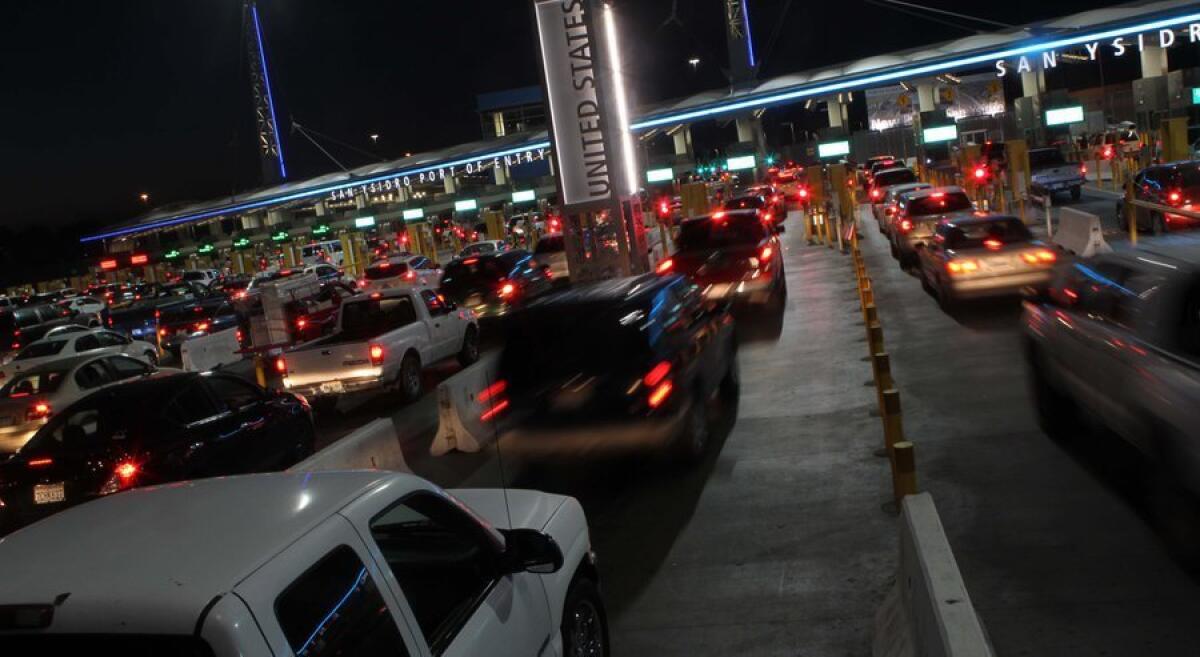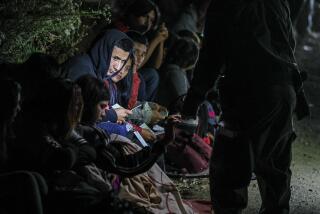Border Patrol closes six lanes at San Ysidro border crossing

- Share via
SAN YSIDRO — U.S. Customs and Border Protection has closed down six vehicle lanes at the San Ysidro Port of Entry until further notice.
The closures are not related to the coronavirus pandemic, a CBP representative confirmed, but part of heightened security measures related to possible court-ordered changes to the so-called Remain in Mexico program.
But any changes in that program would appear to be far off. The U.S. Supreme Court on Wednesday stayed a San Diego district court injunction that would have lifted the program, which forces asylum seekers to stay in Mexico for the duration of their U.S. immigration cases. The stay will remain in place for the duration of the legal challenge, which could last more than a year.
Before the Supreme Court’s announcement, the CBP had been preparing for the injunction to possibly go into effect in California and Arizona. Eighty active-duty troops were dispatched to the San Diego border to help with security measures in case a large group of immigrants tried to force their way into the country.
On Tuesday, the CBP temporarily suspended operations on six of the nearly 30 active vehicle lanes at the San Ysidro Port of Entry to “install and preposition port-hardening infrastructure equipment in preparation for increasing security practices,” said CBP spokeswoman Angelica DeCima.
And late Wednesday, the CBP and the Department of Defense’s Crisis Response Force held a training exercise at the port of entry. Commuters who were waiting to cross into the U.S. were notified of the exercise through a loudspeaker. The border crossing was interrupted for about 15 minutes, according to witnesses.
DeCima later confirmed that the lanes would remain closed until further notice, which the business sector anticipates will increase wait times to cross the Tijuana-San Diego border.
“They are going to increase, but we cannot predict how much,” said Gustavo de la Fuente, executive director with the Smart Border Coalition.
It is unclear how long the military will remain at the border. A Department of Defense spokesman said that the deployment was supposed to be for two weeks. He did not know how the Supreme Court’s action on Remain in Mexico might affect the deployment.
Mendoza writes for the San Diego Union-Tribune. UT staff writer Wendy Fry contributed to this report.
More to Read
Sign up for Essential California
The most important California stories and recommendations in your inbox every morning.
You may occasionally receive promotional content from the Los Angeles Times.










